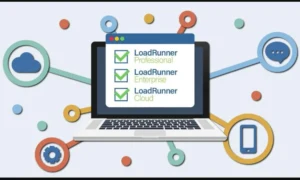Nearly all of us will at some point have to move and handle things at work. If your job requires you to handle heavy objects or organise the stationary cabinet once a month, you are engaging in handling. This applies to both physically demanding jobs and jobs requiring little movement.
It’s important to understand safety precautions because moving and handling account for about one-third of occupational injuries. The most popular precaution is to utilise moving and handling protective gear, which can drastically lower the chance of injury. Apprentices in industrial settings or anyone looking for manual material handling best practises will find this information useful. Further, we will continue with explain principles for moving and handling equipment and other objects safely.
What does handle and moving mean?
A vital component of many industries is manual handling, which is the movement or support of a cargo using the hands or physical force. It is mostly used in agriculture, warehousing, and construction. This is defined as moving and handling under the 1992 Manual Handling Operations Regulations. Equipment for manual handling must be used for efficient performance and worker’s rights. But it will be just as dangerous as operating without the equipment if you’re not trained properly and don’t know how to use it.
Moving And Handling Equipment: What Is It?
While many difficult tasks can be completed securely without using specialised movement (ER, 2020) and operating machinery, as many depend heavily on it to finish the job efficiently and safely.
Depending on the type of business you run, moving and handling equipment can include many different things. There are many different types of moving and handling equipment, such as cargo lifts, cranes, and lift trucks, but it’s crucial to know how to use them properly and in compliance with with the law to create a secure working environment.
Let’s first examine some of the most popular types of lifting and moving equipment available before looking examine several of the most important laws pertaining to handling and transportation.
a look at some of the most widely used moving and handling equipment
It’s important to be aware of potential hazards prior to, during, and after operations, in addition to being acquainted with some of the most popular moving and handling equipment kinds.
Trucks for Lifts
Forklift trucks, also referred to as trucks, are among of the most popular moving and handling equipment on the market. They are employed in numerous contexts, such as stable, level terrain outside and in supermarkets, warehouses, and retail establishments.
Large things are routinely lifted or moved using lift trucks. They are equipped with two metal studs that slip under things to create a secure platform for transit.
Although lift trucks are very common, they can be very dangerous if precautionary measures are not followed. Details from the government about how to operate a lift truck properly (Peake, 2023).
Cranes
Construction-related industrial cranes are capable of lifting 20,000 tonnes of weight. Adequate monitoring, licencing, and training are essential. Since 2001, 61 incidents using tower cranes—the most common type—have occurred, underscoring the significance of safe operation.
The Health and Safety Executive states that there are four main components to safe crane use:
- Arranging for lifting operations.
- Safe work practises.
- Oversight of the lifting process.
- Comprehensive analysis.
The two primary risks connected to cranes are the crane collapsing and the weight falling, both of which have the potential to cause fatalities or major injuries if precautions are not taken.
Electrical pulleys
Electrical tugs are essential components of handling and moving machinery, especially in retail establishments and warehouses. The mechanical strain of repeatedly lugging big things is eliminated by these battery-powered, pedestrian-operated devices that carry and deliver heavy objects.
Electric tugs are commonly employed for pushing and pulling big objects; nonetheless, it is important to exercise caution when using this equipment to minimise any potential risks to the operator or bystanders.
However, to achieve success in academic assignments you must hire assistance from British Assignment Writers online.
How to safely handle machinery for handling and transporting
There are certain safety measures you should take when working with any type of machinery; these may vary depending on the type of handling equipment you are using. Some of the most important things to consider while using handling equipment are listed below.
- It is essential that you perform a pre-shift inspection for any evident defects or damage before using any apparatus.
- Before driving off, as with any moving vehicle, make sure you have a complete inspection of your surrounds. Similar to this, you should always be aware of your surroundings when using anything, such an electric tug or a lift truck, to certain that nothing or no one is in your path.
- Observe the speed limits that your surroundings have established. In general, you are only allowed to go 10 km/h inside and 20 km/h outdoors.
- Always be on the lookout for obstacles and pedestrians.
- When approaching corners and small spaces, slow down.
- The parking brake should always be engaged when exiting your machine (if applicable).
- Use the available stairs and handles and always face the machinery while getting out of a vehicle (such as a lift truck).
- Whatever kind of machinery it is, you must be completely educated and trained to operate it. You should never operate any kind of moving equipment unless you have received the proper manual handling training and management authorization.
- The dangers of improperly handling and moving equipment
- Handling machinery that has minor damage can put operators, co-workers, and bystanders at serious risk. It is essential to utilise equipment only after receiving specialised training and certification. Equipment that is malfunctioning or improperly maintained might be lethal. To manage the hazards, keep three points of contact, never go beyond the maximum weight that the load can support, and refrain from taking short cuts. Place an unstable load on the ground to stabilise it before making any adjustments.
- Even if you are capable of carrying heavy objects yourself, you should always utilise the proper equipment. All moving and handling equipment should be used only after a risk assessment has been completed.
- Are you familiar with the most recent standards for handling and transporting equipment?
- There’s never been a better moment to brush up on basic practises when it comes to handling and moving machinery. It’s crucial that you feel comfortable using the operating machinery at work and being aware about what to do in case of a safety lapse because failing to follow the most recent training and regulations could result in a number of very serious risks.
- References
- Fiona Peake (2023). How to use Moving and Handling Equipment Safely? https://cpdonline.co.uk/knowledge-base/health-and-safety/moving-handling-equipment-safely/ER (2020). How to Make Progress on Your Goals When You Feel Unmotivated? https://eazyresearch.com/blog/how-to-make-progress-on-your-goals-when-you-feel-unmotivated/







































